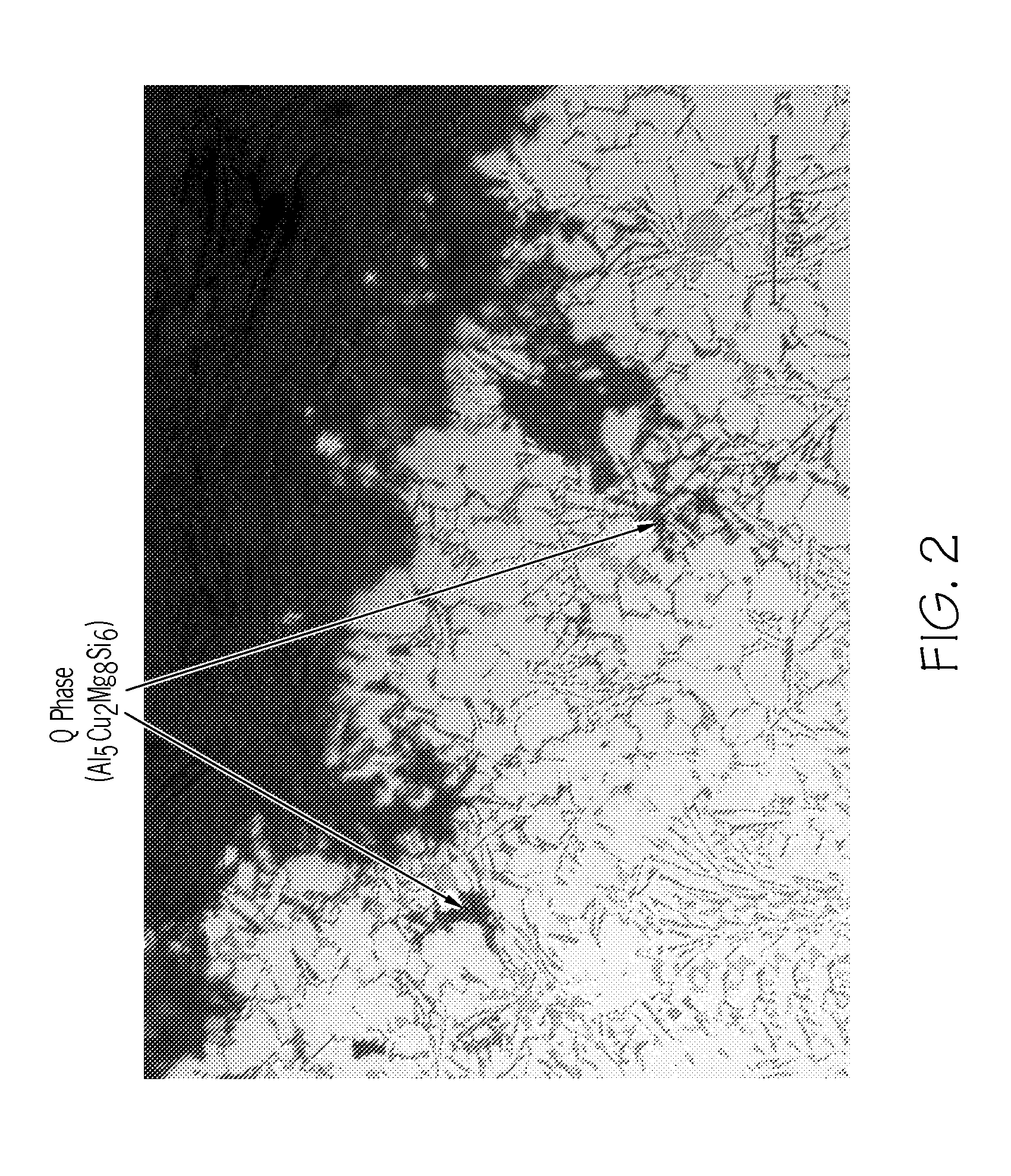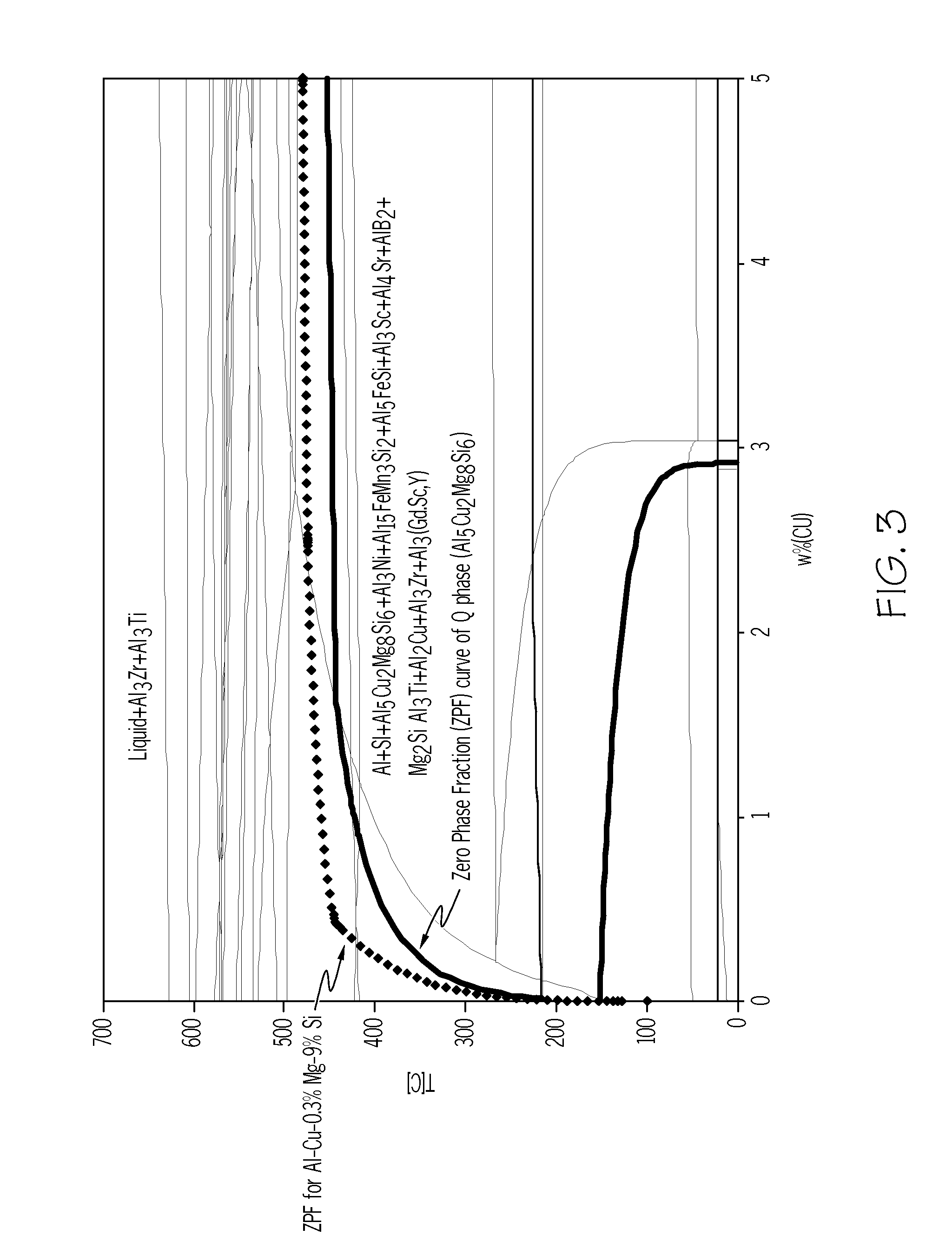Cast aluminum alloys
a technology of aluminum alloys and alloys, applied in the field of aluminum alloys, can solve the problems of low silicon concentration, poor castability, and inherently poor castability, and achieve the effect of improving mechanical properties and corrosion resistan
- Summary
- Abstract
- Description
- Claims
- Application Information
AI Technical Summary
Benefits of technology
Problems solved by technology
Method used
Image
Examples
Embodiment Construction
[0021]High strength and high corrosion-resistant aluminum alloys are provided. In comparison with the commercial alloys 360 and 380, these alloys should exhibit better corrosion resistance and higher mechanical properties.
[0022]The improved strength and corrosion resistance of the cast aluminum alloys extend their acceptance and use in structural applications with environmental challenges, such as engine blocks, cylinder heads, transmission cases, and suspension components. Another benefit would be a significant reduction in the warranty cost of cast aluminum components in automotive applications.
[0023]The alloy may contain at least one rare earth element, such as lanthanum, ytterbium, gadolinium, neodymium, erbium, holmium, thulium and cerium. The alloy may also contain at least one of the castability and strength enhancement elements such as silicon, manganese, iron, copper, zinc, silver, magnesium, nickel, germanium, tin, calcium, and scandium, yttrium and cobalt. The microstruct...
PUM
| Property | Measurement | Unit |
|---|---|---|
| pH | aaaaa | aaaaa |
| breakdown potentials | aaaaa | aaaaa |
| porosity content | aaaaa | aaaaa |
Abstract
Description
Claims
Application Information
 Login to View More
Login to View More - R&D
- Intellectual Property
- Life Sciences
- Materials
- Tech Scout
- Unparalleled Data Quality
- Higher Quality Content
- 60% Fewer Hallucinations
Browse by: Latest US Patents, China's latest patents, Technical Efficacy Thesaurus, Application Domain, Technology Topic, Popular Technical Reports.
© 2025 PatSnap. All rights reserved.Legal|Privacy policy|Modern Slavery Act Transparency Statement|Sitemap|About US| Contact US: help@patsnap.com



